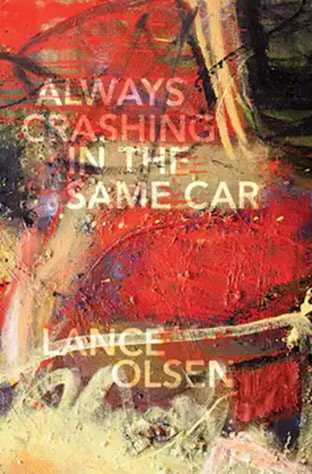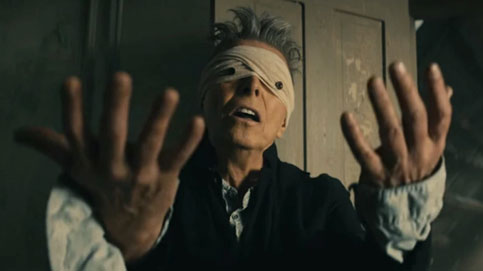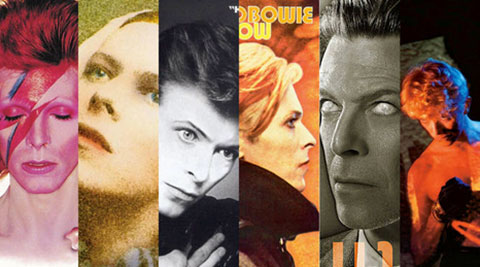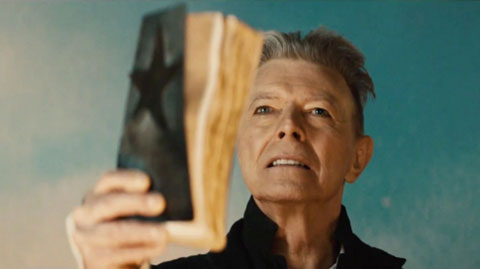
Always Crashing in the Same Car: A Novel After David Bowie, Lance Olsen
(272pp, $18.95, Tertulia)
Although we state or maybe even think that there are no metanarratives or truth, this is a biography for those of us happy to assemble our own truth about what cannot be known. Subjects may potentially have multiple identities. The role of the reader is simply to read, thus, allowing the processes of interpretation, expression and communication possible. As William Shakespeare George Orwell T.S. Eliot Julio Cortázar William Faulkner Don Delillo Franz Kafka Jorge Luis Borges Albert Camus Greil Marcus Jon Savage Paul Morley Rupert Loydell John Cage William Burroughs Lance Olsen Elvis once said Everyday, everyday, every day I write the book.
It is a shock when you find out an author has written more fiction than the non-fiction you knew them for. More so when they answer your tentative email. Olsen employs a version of Burroughs and Bryon Gysin’s cut-up method, whose randomness appeals to him, to generate some of his most startling passages. Olsen loves it. Olsen hates it. Olsen feels intoxicated. Olsen feels trapped. Somebody else took his place. Olsen collects Bowie memorabilia. I started seeing all these sorts of parallels and wanted to explore those in more depth.
Always Crashing in the Same Car is a garbled transmission from space, a studio outtake, a song remixed beyond recognition, a tribute band formed because someone no longer plays live, is no longer alive. You read a book with this belief that you will never leave it behind, yet twenty pages in you cannot summon a single detail from page three. When we usually read a novel, when we read, for instance, a psychological realist novel, we fall through the language into the world of the novel and we inhabit that world. The cliché is we lose ourselves in that world. But what a collage does is something else. What a collage does is to create various voices, none of which is privileged over any other voice.

At the center of our galaxy, a supermassive black hole churns. Permanently out of focus. Unexplainable. It’s all about perspective, it’s all about the angle that you’re looking at something at which will be completely different from the angle that somebody else is looking at an object from. Everything Bowie made got praised in retrospect, if not at the time. Everyone has their favourite era, everyone has their favourite song. Bowie is in a room full of people who are shaking and jerking around. They are using music as sedative, amphetamine rush, painkiller, bravado, seduction, escape and suicide note. Bowie travels from the physical to the spiritual world, chasing a zeitgeist he’d once had the vision to shape.
This is a book that is partly about a writer writing a book that is partly about a writer writing a lifetime of songs that are partly about a writer writing a lifetime of songs that will be performed by a performer writing lives out of songs. The albums that gather these songs up fling matter out into space but leave behind the stellar core. A life long obsession is born that I could feel was spinning out of those records. Jimi Hendrix Eric Clapton Tom Verlaine Mick Ronson Neil Young Frank Zappa Carlos Santana Pat Metheny Jimmy Page David Gilmour Earl Slick John McGeogh Lou Reed Carlos Alomar Keith Richards Buddy Holly Robert Fripp Jeff Beck Ziggy played guitar.
The lists of what you are or were or have been. Conceptual games designed to keep viewers guessing forever. Lists of guests, friends, lovers, collaborators, the looking glass nation. Numerous biographies never seem to get it right, are nothing more than a gross misinterpretation of the efforts of the unconscious to awaken into consciousness. One doesn’t necessarily have to read either beginning to end; every detail is significant.

Car Crash, Andy Warhol
Once upon a time there was a slow-motion car crash. Everything that’s ever been said about the car, ranging from the utopian to the nightmarish has the power to invoke a sense of awe and reverence akin to that of a religious altarpiece. The story is interpreted as showing a merger between technology, sexuality, and death. I think of my art materials not as junk but as garbage. Manure, actually: it goes from being the waste material of one being to the life-source of another.
In his final years David Bowie managed to not only regain critical acceptance but make a surprising high-profile comeback after a decade of silence, with two albums, associated singles and an experimental play. He also seemed to orchestrate the presentation of his own death. Desire, dreams and nightmares have high gravitational attraction and can remain undetected until encountered by entering their gravity field. They are a kind of transmission between the audience and the musician. We all have a black star loitering over our shoulder.
The lists of what you might have been. The lists of what the list writer would have liked you to be. The past and future merge or are perhaps the same thing. Black holes can sometimes eject infalling stardust, thus shaping a cosmic destiny for mankind. If you tell a lie big enough, and keep repeating it, people will eventually come to believe it. Always Crashing in the Same Car is a novel of luxurious inconvenience: facts and assumptions bolted together, ventriloquised opinions. Fiction is always a possibility space where everything can and should be tried.
It can be shocking to be forced to look at the fond and familiar with this degree of clinical precision; anything that ventures too close will be stretched and compressed like putty. Three middle-aged men pose for the camera, one gurning furiously. David Bowie, Robert Fripp and Brian Eno are momentarily gathered in Berlin to make an album. If we are to believe the stories, Fripp improvises his parts over the existing music the moment he arrives, without pausing for sustenance or further consideration.
Their tentacles of influence reach out from Berlin, forwards and backwards in time. In their combined pasts are folk rock, progrock, art rock, improvised tape musics, Ziggy Stardust, Major Tom and his Space Oddity, guitar freakouts for the likes of Van der Graaf Generator, jazz ensembles, mime and laughing gnomes. In the future are new metal, electronica, minimalism, soundscapes, ambient, pop, rock, jazz; genres disrupted and reinvented. Continuous disorientation followed by orientation followed by disorientation.
Pastness is always a problem: who’s telling it, from what vantage point, and why. The three men will each learn from other musicians and other musicians will learn from them. They will collaborate, provoke, educate, curate and produce; they will pontificate, rant, polemicise, pronounce and lecture. They will be heckled, branded, photographed, reviewed, interviewed, despised and loved in equal measure, fascinated by investigating structures and the philosophies they suggest.

Despite theories and explanations, truth never appears in the singular. We could put it this way: texts exist in a perpetual state of change. Bowie is emblematic of that in so many ways. There were many costume changes. Reality was a stage set … the comfortable day-to-day life, school, the home where one lives and all the rest of it … could be dismantled overnight. Often these sorts of experiences are easier to talk about, work through, after the fact than while submerged in the text itself.
Loving the alien, or pretending it is human. Watching your family die without water on the planet that you came from. Bowie subverted the grandeur of spaceflight along with the wonder and excitement over the moonwalk and turned the cosmos into a place of ominous mystery. Once upon a time. Ambient panic. The thing itself always slips away.
Snakes and sigils, pentograms and pills, white-faced demons and angelic guitars. A song opened and closed with the chanted vocals of a dirge. Words as wings, ready for flight. Bowie was resigned to the fact that death would be the only thing to bring real knowledge although meanwhile he continued to attempt to grasp something no one can understand.
Cut-up, collage, quotation and appropriation. Misquotation. What is the language using us for? Magic and invocation. Summoning the dead. By manipulating tape and video you are in some ways manipulating reality. A fictional biography about real life fiction. The author an experienced sleight of hand magician performing creative writing in a contemporary style. The subject is the person, place, thing, or idea that is doing or being, the book is full of disconnected images and allusions.

The wreckage of a biography, exhibited in an art gallery. A story about car-crash sexual fetishism, a mix of futuristic dread and excitement, a sweet spot where dystopia and utopia converge.
The biography constructed and assembled. A clutter of visual signifiers, signifying nothing, collage as a creative urge. Some seem to think that I work with found pieces, but I don’t. They’re chosen, you see.
Biography as influence and effect, the world as text. A biography which is free to enter into relation with all the other texts which come to take the place of circumstantial reality. It’s a much better interview because it doesn’t exist. Now we can both misremember it in very rich ways.
A prismatic exploration of Bowie through multiple voices and manifold perspectives – the chameleonic musician himself, an academic trying to compose a critical monograph about him, friends, lovers, musicologists, and so on. One of the best books about Bowie I have come across but also one of the best books I have read that is not about Bowie. At its core beat questions about how we read others and how we are read by them. In other words, it asks: Who is any of us?
Knock, knock. Who’s there? Nobody. Nobody at all.
Rupert Loydell
This review includes quotations and misquotations from J.G. Ballard, Peter Bebergal, David Buckley, John Chamberlain, Esquire, W.S. Graham, Lance Olsen, Rupert Loydell, National Geographic, New Dawn, Rain Taxi, Edward W. Said, Jacob Shelton, Zadie Smith, Kyle B. Stiff, M.F. Sullivan, Tin House, Transatlantica, Mark Westall and others.
•
You can read an excerpt from Crashing in the Same Car here: https://bigother.com/2021/12/07/always-crashing-in-the-same-car-by-lance-olsen/
and at Statement of Record here:
https://statorec.com/always-crashing-in-the-same-car-by-lance-olsen/
•

Lance Olsen is an American writer known for his experimental, lyrical, fragmentary, cross-genre narratives that question the limits of historical knowledge. He is author of more than 30 books of and about innovative writing, and teaches experimental narrative theory and practice at the University of Utah. You can find more about him and his publications at https://lanceolsen.com/

Cool piece Rupert
Comment by Keith Rodway on 25 February, 2023 at 8:38 amThanks Keith. It’s an intriguing book.
Comment by Rupert on 25 February, 2023 at 8:51 pm